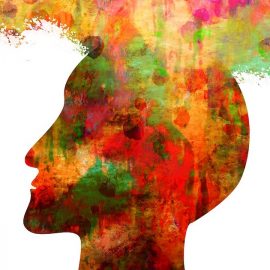
Can child therapy actually damage family relationships? Is therapy bad for kids, in general?
In Bad Therapy, Abigail Shrier argues that while mental health treatments aim to help children, treating them when it isn’t necessary can cause unintended harm. She discusses five ways therapy can damage young people.
Below we’ll look at the five negative consequences of therapy for kids, according to Shrier.
1) Children Might Accept Unhelpful Ideas Without Question
The first reason why therapy is bad for kids is that young people lack the life experience and self-awareness to challenge a therapist’s ideas like adults can. Because of this, they might accept inaccurate or unhelpful interpretations without question, leading to confusion about their feelings or experiences. For example, if a therapist tells a teen that their parents’ strict rule about chores is overly controlling, the teenager might start viewing their parents as unfair or oppressive.
(Shortform note: This tendency to trust what authority figures say without question isn’t unique to young people—it’s hardwired into all of us. As Robert Cialdini explains in Influence, humans have a psychological instinct to defer to authority figures, whether they’re doctors, teachers, or other experts. We’re so prone to this that even just symbols of authority like titles or uniforms can make us more likely to follow someone’s lead. This suggests that both children and adults alike may struggle to challenge the ideas of therapists if they consider them to be authorities.)
2) Family Relationships Can Suffer
Second, Shrier says that therapists often suggest that many issues stem from childhood trauma, leading patients to view their parents in an overly negative light. She argues that this can cause young people to cut ties with family members when they become adults, depriving them of relationships that could provide connection, support, and guidance.
(Shortform note: In What Happened to You?, Bruce D. Perry and Oprah Winfrey argue that childhood trauma often has lasting effects because it shapes how your brain develops. Think of your brain as a city: Your early childhood years form the foundation, and everything else gets built on top of that base. When trauma occurs during these formative years, it’s like building a city on unstable ground—the whole structure becomes more vulnerable to future problems. However, Perry and Winfrey agree with Shrier on the importance of relationships as a form of support, emphasizing that healing from childhood trauma requires strong community connections with friends and family, not isolation.)
3) Unproven Treatments Can Backfire
Third, Shrier contends that many therapies used on kids haven’t been proven to work and can backfire. For instance, group sessions for trauma survivors often worsen symptoms rather than improve them—when children repeatedly talk about the trauma with other victims, they may feel their negative feelings intensify rather than heal from them and move on.
(Shortform note: Trauma experts say that group therapy sessions can be successful for young people as long as the sessions have three things: experienced therapists who can manage intense emotions, careful screening of participants to ensure they’re ready for this type of session, and individual therapy support running alongside the group work. The experts explain that group sessions work best when participants can process their experiences at similar emotional levels, which prevents some members from becoming overwhelmed while others are understimulated. Because of this, they recommend that participants be matched by age, gender, and their ability to handle emotional distress.)
4) Children Might Obsess Over Emotions
In therapy, children often reflect on and share their emotions, and parents and educators regularly check on how kids feel. However, Shrier argues that constantly asking children how they feel teaches them to see their emotions as overly important. This is harmful in three ways:
First, young people learn to use their emotions as the basis for decisions. This can lead to poor decisions because our emotions are constantly changing and don’t always match reality. Shrier explains that many external factors can influence our emotional state, and feeling something doesn’t automatically justify acting on it. For example, if a teen is upset with their friend due to a misunderstanding, they might end the friendship in anger without trying to uncover the full story.
Second, when children frequently reflect on their emotions, they feel more negative emotions like anxiety or sadness. This is because happiness isn’t a common feeling—most of the time we feel neutral at best. So, if you ask kids how they feel every day, you’ll often just remind them of something negative, such as worries or stresses they have about the day.
Third, fixating too much on emotions can make it hard for young people to manage them—to acknowledge their emotions, put them into perspective, and move on. Shrier says that when young people share their mental health problems, they often get sympathy and attention, which encourages them to exaggerate or prolong their issues instead of trying to resolve them.
5) Children Might Feel Inherently Fragile
Shrier writes that overtreatment not only teaches children to fixate on their emotions, but it also causes them to view themselves as inherently damaged and fragile. She argues that today’s society has become obsessed with finding trauma in everyone’s past. While severe trauma exists, the tendency to see trauma everywhere convinces people that common childhood difficulties permanently damage them.
Shrier adds that when we rush to diagnose and medicate children, we damage their self-image and create a self-fulfilling prophecy: Children think they can’t change or improve without professional help and expect less from themselves. As a result, instead of learning to handle life challenges by themselves, they struggle to make decisions or take action without medication or guidance.






